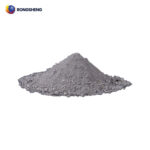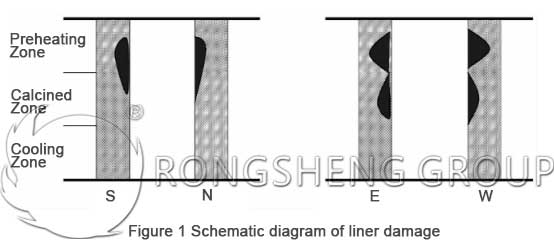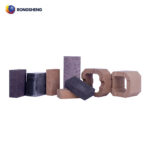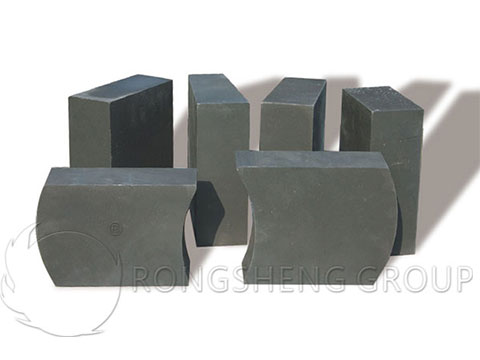Refractory Materials for Tunnel Kiln Roof
Tunnel kiln is a thermal equipment for continuous production, which can generally be produced continuously for 7-8 years or even more than 10 years without maintenance. The kiln roof is prone to damage, especially in the stage of putting into operation the ignition kiln, the kiln roof structure is prone to cracks, surface spalling and slight decline due to uneven heating. If the material is not selected properly, it will seriously affect the service life of the kiln. For this reason, the refractory material for the top of the tunnel kiln must be carefully selected.
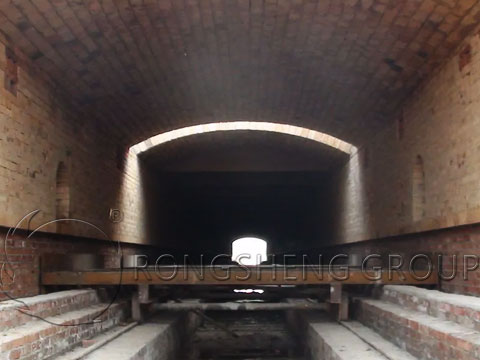
There are the Following Types of Tunnel Kiln Roof Structures
- (1) Flat ceiling kiln roof. Burnt magnesia products (magnesia bricks, magnesia chrome bricks, magnesia alumina bricks) and high alumina bricks. The large-section tunnel kilns all adopt the flat pre-hanging structure.
- (2) Vaulted kiln roof. The roof structure of the kiln is arched. The arched bricks are erected on the kiln wall, and foot beams are installed on the kiln walls on both sides of the arched bricks to withstand the transverse thrust generated by the vault. There are uprights outside the kiln wall, and the kiln roof and the kiln wall are formed as a whole by pulling up and down rods.
- (3) Suspended vault kiln roof. The tunnel kiln adopts a suspended vault in the firing zone with high temperature. Compared with the flat-top kiln, this kiln roof saves steel and saves investment. The air tightness of the kiln roof is better, and the heat dissipation is also less. This structure is only used in small tunnel kilns for firing magnesia and high alumina products.
The shed plate of the new type of adjustable hanging kiln roof is supported on the hanging rail, the hanging rail is provided with a hanging groove, and the hanging rail is hooked by a hanger of refractory material. Because the bolts are omitted and the span between the shed slabs is increased, the complexity of the construction of the kiln can be significantly reduced. At the same time, the effect of further reducing the heat dissipation and heat absorption of the kiln wall is obtained.
Selection of Kiln Roof Bricks in Tunnel Kilns
Kiln roof bricks are refractory materials for tunnel kiln roofs. Various types of tunnel kiln walls, kiln roof materials, and thicknesses have standards. The following factors should be considered when choosing a brick material.
- (1) The maximum firing temperature of the fired product.
- (2) The working temperature and operating conditions of each belt of the kiln.
- (3) The required years of use.
Refractory Materials for Tunnel Kiln Roof

First-Class High-Alumina Arch Angle Brick
Arch angle bricks are refractory materials for tunnel kiln roof with vault roof structure. Lightweight refractory concrete slab ceiling structure is generally used. The refractory concrete ceiling slab is prefabricated by adding water, forming and curing with aluminosilicate cement as a binder, and a certain proportion of porous high-alumina refractory aggregate and fine powder. It is characterized by low bulk density and light weight. Low thermal conductivity, good thermal insulation performance, and small linear change after burning.
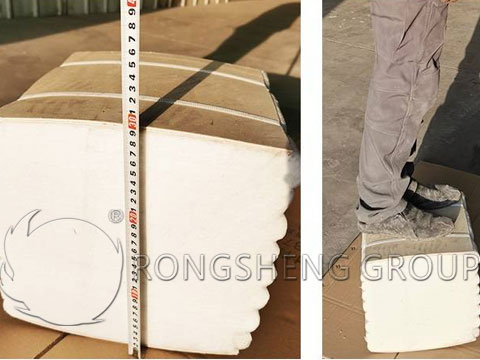
Application of Aluminosilicate Ceramic Fiber Refractory Cotton on the Roof of Tunnel Kiln
The quality of the thermal insulation structure of the tunnel kiln roof directly affects the output, coal consumption, and service life. Ceramic fiber products have the advantages of light weight, high temperature resistance, good thermal stability, low thermal conductivity, small specific heat capacity and mechanical vibration resistance. Therefore, it has been applied in machinery, metallurgy, chemical industry, petroleum, ceramics, glass and other industries.
The use of ceramic fiber suspended and flat roof structure on the roof of the tunnel kiln has successfully solved the problems of traditional heavy refractories that are easy to fall off and collapse. The structure of the large-section tunnel kiln roof and the mobile tunnel kiln is lightened, the cost is reduced, the structure is safe and reliable, and the energy saving effect is very good. The ceramic fiber ceiling module is currently widely used in the composite structure of flat laying, which has good air tightness, good thermal insulation effect and firm structure.
Advantages of ceramic fiber refractory cotton flat ceiling application
1. Lightweight structure
The weight of the ceramic fiber cotton ceiling is only 75kg/m2, and the micro-arch structure is made of stilted bricks, all of which are made of heavy bricks (about 1500kg/m2). At the same time, the upper part is filled with soil for heat preservation, and the overall structure is very heavy, which is 15 to 20 times the weight of the fiber ceiling. At the same time, there is also a horizontal thrust, and the requirements for the foundation and furnace wall structure of the kiln are much higher than those of the ceramic fiber ceiling. Ceramic fiber ceilings can save a lot of money when it comes to foundations.
2. Good thermal insulation effect, energy saving and environmental protection
The thermal conductivity of ceramic fiber cotton products (0.13w/m·k at 1000°C) is small, and the thermal insulation effect is about 8 times that of refractory bricks. It greatly reduces the heat loss in the kiln and improves the thermal efficiency. Greatly reduces the internal combustion of bricks.
3. Good thermal shock resistance and long service life
Ceramic fiber products have good thermal shock resistance, no cracking or damage in the environment of rapid cooling and rapid heating, and long service life.
4. Flat roof structure
The new refractory cotton ceiling structure has a uniform gap between the flat roof structure and the brick, and the ventilation is uniform. It avoids the phenomenon that the middle resistance of the micro-arch structure is small and the resistance on both sides is large, resulting in uneven fire on both sides of the brick and the middle brick.

